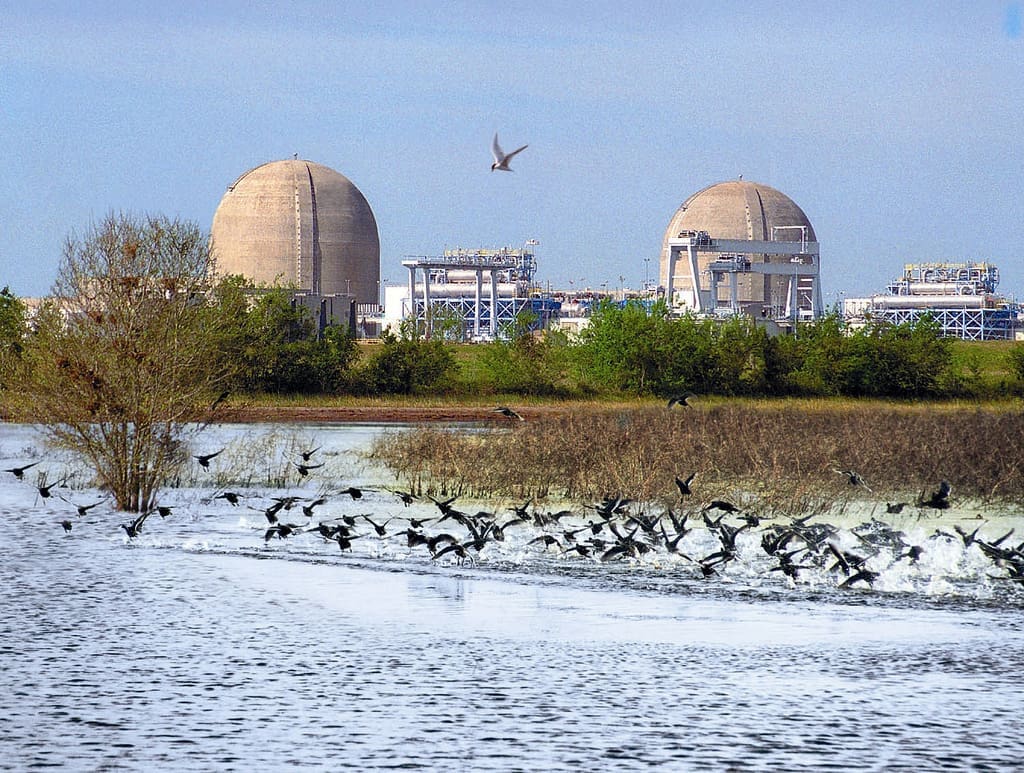Texas has become a hotspot for tech companies, attracting business from data companies that need larger campuses to meet national demand. In the midst of a water crisis, data centers create additional demand for this vital resource.
According to the Texas Commission on Environmental Quality (TCEQ), there are 64 public water systems currently limiting usage in order to avoid shortages. The TCEQ’s drought map shows severe alerts being issued throughout Central Texas and the Rio Grande Valley.
This year, what Gov. Greg Abbott called “Texas-sized investments” were made with the passage of Senate Bill 7 and House Joint Resolution 7, which appropriated billions of dollars toward water infrastructure and conservation.
While most policy concerns center around agricultural demands and municipal shortages, the impact of data centers on Texas’ water crisis is receiving more attention.
A white paper released by the Houston Advanced Research Center to the Austin Chronicle estimates that data centers are set to use 49 billion gallons of water by the end of 2025. That number is predicted to rise to 399 billion gallons by 2030, potentially accounting for 6.6 percent of Texas’ total water usage.
As data centers often operate around the clock, daily water consumption for mid-sized facilities can exceed 300,000 gallons. Larger facilities can require upwards of 4,500,000 gallons per day.
Another study suggests that data centers could consume up to 5,000,000 gallons in a single day, roughly equivalent to towns with populations between 10,000 and 50,000 people.
As Texas continues to attract companies that rely on data centers, a corresponding increase in water will be needed.
“We have the regulatory ingredients to be the envy of the world with AI—now we need the infrastructure,” David Dunmoyer of the Texas Public Policy Foundation told Texas Scorecard.
OpenAI, in partnership with Oracle and SoftBank, has continued construction on its Stargate site in Abilene. Once completed, it is expected to deliver over 5 gigawatts of data center capacity.
“Programs like Stargate’s $500 billion data center investment—of which Texas is the most desired location—are crucial, but this will only increase the amount of water and energy resources our state needs,” warned Dunmoyer.
While these agreements with new businesses bring benefits—such as partnerships with municipalities, increased local employment, and corporate profits that boost the state and national economies—they could also have serious consequences for Texas if not carefully managed.
The Electric Reliability Council of Texas’ (ERCOT) long-term forecast anticipates a large uptick in the amount of power consumed by data centers over the next few years, stating that “[n]ew [d]ata [c]enters continue to be the major area of new growth.”
Though ERCOT did not quantify the data centers’ energy consumption for 2025, the forecast anticipates that over 12,700 megawatts will be consumed in 2026. That figure will more than double in the following year, according to the same report.
Additionally, HARC released a report revealing that for every megawatt per hour (MWh), 793 gallons of water are used on average. This number can rise to over 45,000 gallons in extreme cases for larger data centers.
HARC’s and ERCOT’s findings, taken together, indicate the coming years will mark a substantial increase in the amount of water consumed by data centers.
The Texas Water Development Board’s near-term projections for total usage by 2030 are just under three-fifths of what statewide aquifers contain as of the date of publication.
“Balancing the push for new water sources like produced water, desalination and others with accountability for cities that are poor stewards of water will be essential to the continued prosperity of our state,” said Dunmoyer.





